- Published 24 Jan 2023
- Last Modified 29 Aug 2023
- 10 min
A Complete Guide to Heat Lamps
Our guide will help you understand what heat lamps are, their uses, how they work and the various types available.

This guide is designed to answer several key questions, including ‘what are heat lamps?’ and ‘how do they work?’. We will look at some of their more common uses and identify the main types of IR bulbs you can buy online.
What is a Heat Lamp?
Heat lamps are special types of incandescent bulbs. They are designed to generate as much heat as possible through infrared radiation, so they are often called infrared lamps, infrared heaters, or IR bulbs. Their ability to warm quickly, cheaply and efficiently makes them useful in many temperature-critical applications.
Nearly all bulbs of this type are incandescent. As their main purpose is to produce warmth rather than just light, there isn’t really such thing as an LED heat lamp:
- LED bulbs are much more efficient at turning electrical current into light than incandescent lamps, losing very little energy as heat during the process
- In practice, this means that LED lamps simply don’t get warm enough to be useful in this role
- Infrared LEDs do exist, but they are mostly used for remote controls and other communications devices
Incandescent bulbs, on the other hand, are relatively inefficient when used primarily for lighting:
- They lose a significant amount of infrared radiation as heat energy while converting electrical current into light
- In most cases, this is an undesirable side-effect of non-LED bulbs. In certain specific applications, though, it is a benefit
- Infrared heaters are designed to prioritise this effect, while light quality may be a lesser concern
How Does a Heat Lamp Work?
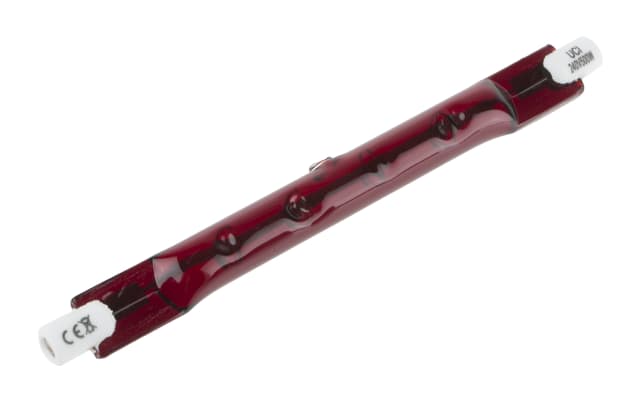
Understanding how heat lamps work is basically the same as knowing how a traditional bulb works. A thin tungsten wire (filament) is enclosed in a capsule of inert gas, and acts as an electrical resistor. It warms and glows under a flow of current, emitting both light and heat.
However, bulbs sold specifically for heating differ from standard incandescent bulbs in several key ways:
- They are often designed to run under more powerful currents than normal light bulbs, and thus generate higher temperatures
- Most light bulbs max out at around 100W. This tends to be the lower end of the spectrum for IR heaters, which often run to 2kW and beyond
- Lighting ability is not usually the main selling point. Their light output may even be deliberately limited to prioritise warming capacity. This is often done via filters or reflectors to help concentrate heat radiation
- More robust materials are used than for lower wattage bulbs. Common examples include heavy-duty filaments and ceramic bases. These can help to prevent blowouts or melting of the housing under heavy current
Heat Lamp Uses
Thanks largely to their unique characteristics, IR lamps are useful in several sorts of applications. Relative to other forms of space heaters and radiators, these include:
- Their ability to reach very high temperatures extremely quickly
- The potential to dial in their heat output to specific levels or temperature gradients
- The fact that their hot zones can be focused towards a small concentrated area, unlike with some alternative methods such as open fires or convection heaters
- Their overall efficiency and cost-effectiveness as an electrical heat source
- Their ability to heat without making direct contact or disturbing the subject. In contrast, conductive, combustion or convection heaters can all affect the subject in various ways
When compared with many other types of heaters and heat sources, the above qualities often make IR heaters a preferred solution for a wide range of tasks.
Everyday examples include:
Animal Heat Lamps
Vivarium and hatchery use is one of the most common reasons for buying these bulbs online. In particular, many people choose heat lamps for chicks and reptiles that are being raised. So-called brooder lamps are often installed near hatchling chickens to help mimic warmth from a nesting parent. In a vivarium, the lamp simulates the sun’s warmth, helping to regulate body thermals or metabolism.
Catering Heat Lamps
Food heat lamps for commercial use are found in a wide range of cafes, restaurants, self-service diners and takeaways. You will often see them installed where hot food needs to be available over an extended period. They are also commonly installed alongside other retail food cabinets.
Heat Lamps for Plants
Terrarium and grow room use is another reason people shop for IR bulbs. They are used to exercise accurate temperature control. IR can simulate warmer climates and biomes or mimic the day-night cycles required by many types of non-native plants.
Other common uses for these types of bulbs include:
Heat Lamps for Bathrooms
These help to warm the area prior to use, and clear condensation from mirrors, walls and other surfaces. This gives a better overall experience and reduces the chance for mould and mildew to grow in damp rooms. They are quite common in hotels and guest houses and are also becoming more popular with homeowners.
Infrared Paint Curing Lamps
These help paint to dry (and, for some finishes, to harden) after it has been applied. They are most often associated with body shops and automobile spraying, where it is essential to properly cure the paintwork.
Many decorators also use drying and curing lamps for speedier job completion, especially in large or busy areas. They can give a more even, hardwearing and professional-looking finish than air-drying alone. These specialist lights should not to be confused with regular work lights or painters lamps.
Medical Uses
People with chronic conditions or short-term injuries may use IR warming technology as treatment for physical flare-ups and symptoms. They can help with soothing all manner of sore or swollen joints and muscles. An infrared heat lamp for back pain is a popular choice as a convenient, fast-acting alternative to hot water bottles or heat packs.
Heat Lamp Types
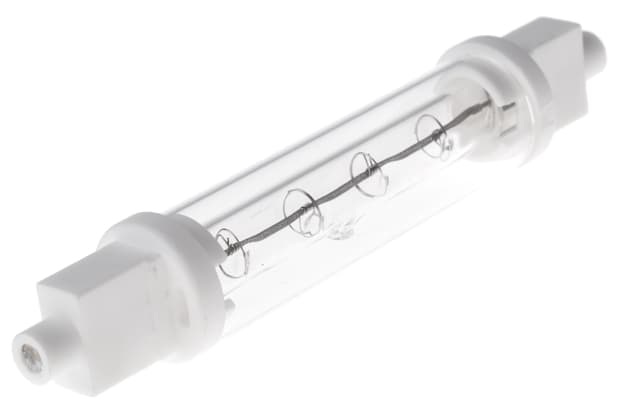
There are three main types of IR lamp for sale online. Each is defined by its wavelength - short, medium or long wave. There are pros and cons to each type in various roles.
Short wave IR is higher intensity (hotter and brighter) and more transmissive (better at covering greater distances) than medium wave and long wave IR. Due to the way it excites molecules directly, shortwave IR heats surfaces and objects more effectively than air. Short wave IR uses up a lot of the energy it consumes in achieving its throw, or projection distance, over a narrow but intense heating zone.
Medium wave IR and long wave IR are cooler and generate dimmer light (usually as a red glow). They are less transmissible (shorter range), but more penetrating (better absorbed by the subject). They are more effective at gradually increasing temperature to a comfortable level over a prolonged period. Longer wavelengths expend more of their energy on sustained gentle warming of a smaller area.
It is always useful to choose the best kind of IR heater for the specific purpose you have in mind.
Short Wave Heat Lamps
Which light bulbs give off the most heat? Short wave infrared is basically the hottest and brightest type of lamp. It is best used for more intensive and direct heating tasks, as well as for covering greater distance outdoors.
They come up to temperature almost instantly and are good for an intensive burst of comfort warmth aimed straight at a subject. They lose very little of their energy to warming the air around the bulb, so almost all of it arrives as direct heat.
Ideal uses include outdoor patio heating, where the radiated warmth needs to travel over a longer distance quickly to hit an object or person. Short wave infrared copes well in wind and makes quick work of highly focused heating tasks like curing and drying paint.
As it has little effect on areas of low molecular density, it is less good at raising ambient air temperature. It is also unsuitable for prolonged close-range or indoor use, due to the intense heat and light it produces.
Medium Wave Heat Lamps
Medium wave infrared heaters are better at warming a room than short wave versions. Their heat is more easily absorbed by people and objects, but it is less transmissible at distance.
They ramp up a bit more slowly, usually around 30 seconds to a minute. They are roughly as good at dispersing warmth to the air as they are at directly heating solid surfaces.
Around 60% of their output arrives as direct heat, with 40% used to warm the space around the lamp. They are not effective in windy conditions, making them less suitable for most outdoor uses.
Long Wave Heat Lamps
Only about 40% of the energy output by far-infrared lamps arrives as direct heat, with 60% lost to the surrounding air. A long wave infrared heater is therefore a better choice for more gradual heating of enclosed spaces.
They can take 5-20 minutes to reach relatively low peak temperatures of around 300 Celsius. They emit very little light compared to a short-wave IR lamp, making them far less obtrusive. They are often preferred for indoor panel heating arrays. Since they are highly vulnerable to wind, they tend to be ineffective for outside use.
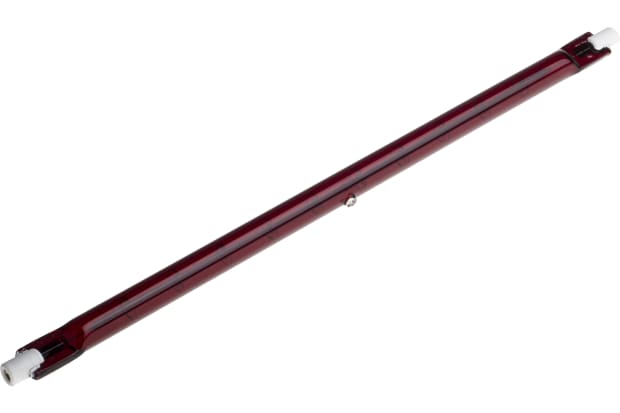
Red Heat Lamps
So-called ruby heat lamps are designed to emit less bright light as they warm up. This is done using red filters, producing a duller and warmer glow than you would otherwise see at a given IR wavelength.
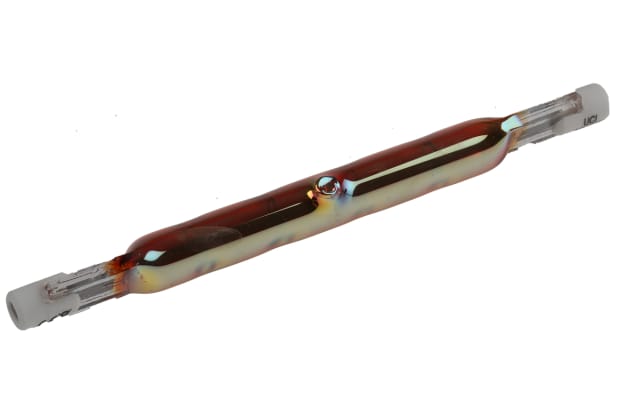
Gold Heat Lamps
Gold heat lamps aim for the opposite lighting effect to red ones, with highly reflective gold or yellow coloured filters helping to maximise the lumen output. This can bring them more in line with traditional incandescent or halogen bulbs for use in domestic and public spaces.
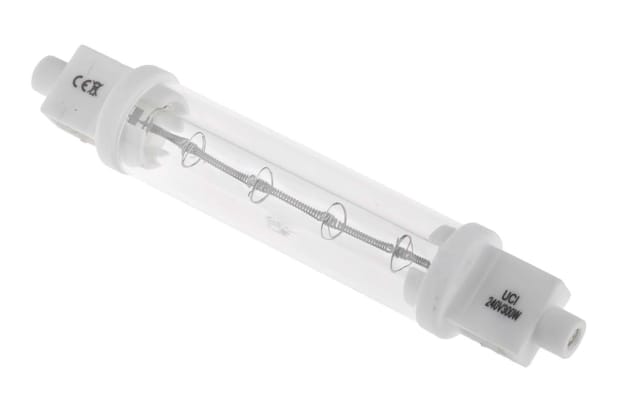
Clear Heat Lamps
Clear models will generally output whatever intensity of light their IR wavelength dictates, without attempting to reduce or enhance it. What is the difference between red and clear heat lamps? In truth, very little in terms of basic function - but a clear bulb might be the slightly cheaper option if you do not need an adjusted red or gold version.
FAQs
Are Heat Lamps a Fire Hazard?
Good quality products are designed and built with safety in mind. Even so, when used irresponsibly, they can be a potential hazard. General safety tips for proper use include:
- Ensuring you buy quality products, using suitable housings and materials for the wattage they run at
- Using an appropriately certified bulb cage (a bail)
- Making sure the entire setup is positioned well out of reach
- Ensuring they are firmly secured, ideally with a secondary anchor point as a failsafe
- Keeping all wires, cables and connectors well maintained and out of reach
- Removing all combustible materials, including regular clearing of any dust and debris
- Keeping away from any sources of liquid, moisture or damp
- Regularly checking for signs of wear or damage, and promptly repairing or replacing if necessary
- Keeping smoke alarms and fire extinguishers close at hand
- Ensuring they are not used in locations blocking an exit or escape route in the event of a fire
Are Heat Lamps Safe to Leave on All Night?
You should avoid leaving most high-power draw electricals switched on around the clock, especially if they are unmonitored. High-powered bulbs are no exception.
Relatively few scenarios will require you to leave them on overnight, since many are bought to mimic sunlight. If you absolutely must leave a lamp on while unattended, try to set up a way of monitoring the area remotely, such as a CCTV camera.
You must also maintain an operational smoke detector and fire extinguisher nearby.